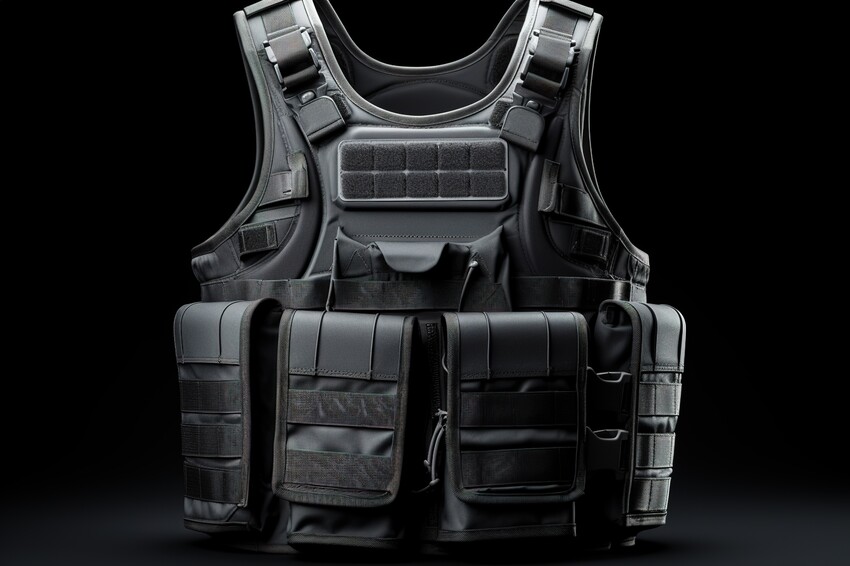Training in military, police, and special forces requires a unique combination of physical fitness, mental toughness, and quick decision-making under pressure. For these professionals, maintaining peak physical condition is crucial for their roles, which often involve high-stakes scenarios that demand quick reactions, endurance, and strength. A weighted vest is an essential tool in their training routines, as it helps improve overall performance by adding resistance to regular exercises, simulating real-world challenges, and preparing them for the physical demands of their jobs.
This article will explore how military, police, and special forces personnel use weighted vests to enhance physical capabilities, improve endurance, and sharpen response times. We’ll also look at how this versatile piece of equipment aids in building functional strength and prepares individuals for the rigors of real-life operations.
How Weighted Vests Improve Military, Police, and Special Forces Training
1. Building Functional Strength and Endurance
For military and law enforcement personnel, brute strength alone isn’t enough. They need functional strength—strength that translates to real-world tasks, such as carrying heavy gear, climbing obstacles, and maintaining stamina during long operations. Weighted vests are perfect for building this kind of strength, as they mimic the weight of tactical gear worn during operations, forcing the body to adapt to heavier loads.
- Mimicking Real-World Scenarios: Weighted vests simulate the heavy body armor, weapons, and equipment that military personnel and law enforcement officers carry in the field. By incorporating weighted vest training into daily workouts, trainees build strength in their core, back, shoulders, and legs, which helps them carry their tactical gear with more ease during real operations.
- Increasing Endurance: Carrying additional weight for extended periods challenges the cardiovascular system, improving endurance and stamina. Running drills, obstacle courses, and even walking with a weighted vest conditions the body to perform at high intensity for longer periods, critical for military missions and police operations.
2. Enhancing Response Time and Agility
In combat or law enforcement scenarios, being able to react quickly and efficiently is often the difference between success and failure. A weighted vest helps sharpen reflexes and improve agility by making regular exercises more challenging, forcing trainees to move faster and more efficiently despite the added resistance.
- High-Intensity Interval Training (HIIT) with a Weighted Vest: HIIT exercises such as sprints, burpees, and shuttle runs are made more intense with a weighted vest. The extra resistance requires more energy and forces the body to move more efficiently, which in turn sharpens reaction times and enhances speed. This type of training is especially beneficial for police officers who need to chase down suspects or military personnel who need to navigate through rapidly changing environments.
- Combat Drills: Military and special forces often incorporate weighted vests into combat drills, such as simulating the weight of full body armor during hand-to-hand combat or tactical maneuvers. This not only builds physical strength but also enhances muscle memory, allowing for faster, more coordinated movements during real-life operations.
3. Strengthening Core and Balance
Maintaining balance and core stability is crucial for professionals in law enforcement and the military. Whether it’s maintaining posture while carrying heavy gear or keeping balance during physically demanding situations, having a strong core is essential.
- Core-Centric Exercises: Wearing a weighted vest during core exercises such as planks, sit-ups, or mountain climbers increases the resistance, forcing the abdominal muscles and lower back to work harder. This helps military and police personnel build a strong, stable core, which is necessary for lifting heavy objects, engaging in physical confrontations, or operating in unpredictable terrain.
- Improving Balance and Stability: Weighted vests shift the body’s center of gravity, making exercises such as lunges, squats, and box jumps more difficult. For military and law enforcement personnel, improved balance and stability can make a significant difference in scenarios where maintaining control is critical, such as in fast-moving foot pursuits or combat situations.
4. Increasing Cardiovascular Fitness and Stamina
For those in military, police, and special operations roles, cardiovascular fitness is non-negotiable. Tasks such as running, swimming, and endurance marches all require high levels of cardiovascular stamina. By adding a Zelus weighted vest to cardiovascular exercises, the body is forced to work harder, improving heart and lung capacity over time.
- Running with a Weighted Vest: Running is a staple in military and law enforcement training, and adding a weighted vest for running significantly increases the intensity. The added resistance pushes the cardiovascular system to its limits, boosting endurance and overall fitness. This is especially beneficial for those preparing for endurance-based missions or operations that require covering long distances on foot.
- Marches and Hiking with a Weighted Vest: Military and special forces personnel frequently engage in long marches or rucks while carrying heavy loads. Practicing these activities with a weighted vest helps simulate the weight of full gear and builds the stamina needed for long-distance treks. Over time, this training strengthens the legs, increases lung capacity, and conditions the body for sustained physical effort.
5. Building Mental Toughness
In military and law enforcement roles, mental resilience is just as important as physical strength. The physical discomfort of wearing a weighted vest during strenuous activities pushes trainees out of their comfort zones, helping them build the mental toughness required for high-stress scenarios.
- Simulating Operational Stress: Military personnel and police officers often face physically and mentally exhausting situations, such as long patrols or combat missions. Training with a weighted vest helps build the endurance needed to stay sharp, focused, and effective, even under extreme stress.
- Overcoming Fatigue: Weighted vest training is physically demanding, and completing exercises while wearing additional weight requires determination and focus. This simulates the mental and physical fatigue experienced during real-life operations, training individuals to push through discomfort and maintain performance under pressure.
Incorporating Weighted Vests into Training Programs
To maximize the benefits of a weighted vest, it’s important to incorporate it into a variety of exercises and drills. Below are a few ideas on how to effectively use a weighted vest in military, police, and special forces training:
- Weighted Circuit Training: Combining strength exercises (e.g., push-ups, pull-ups, and squats) with high-intensity cardio (e.g., sprints and shuttle runs) while wearing a weighted vest provides a full-body workout that builds endurance, strength, and agility.
- Obstacle Course Drills: Completing obstacle courses while wearing a weighted vest simulates the challenges of navigating difficult terrain in full gear, helping trainees improve their strength, balance, and problem-solving skills under pressure.
- Weighted Ruck Marches: Practice long-distance marches or hikes while wearing a weighted vest to condition the body for carrying heavy loads during extended operations.
- Tactical Combat Simulations: Incorporate a weighted vest into tactical combat drills to simulate real-world conditions, allowing trainees to practice hand-to-hand combat, defensive maneuvers, and tactical movements while under the stress of additional weight.
Conclusion
For military, police, and special forces personnel, physical fitness is a vital component of success in the field. By incorporating a weighted vest into training routines, these professionals can enhance their strength, endurance, balance, and mental toughness, preparing them for the physical and mental demands of their roles. Whether running drills, combat simulations, or endurance marches, the weighted vest proves to be a valuable tool in developing the functional fitness needed for real-world operations.
With the right training and dedication, a weighted vest can significantly improve performance, helping military and law enforcement professionals meet the challenges of their demanding roles head-on.
Read Dive is a leading technology blog focusing on different domains like Blockchain, AI, Chatbot, Fintech, Health Tech, Software Development and Testing. For guest blogging, please feel free to contact at readdive@gmail.com.





